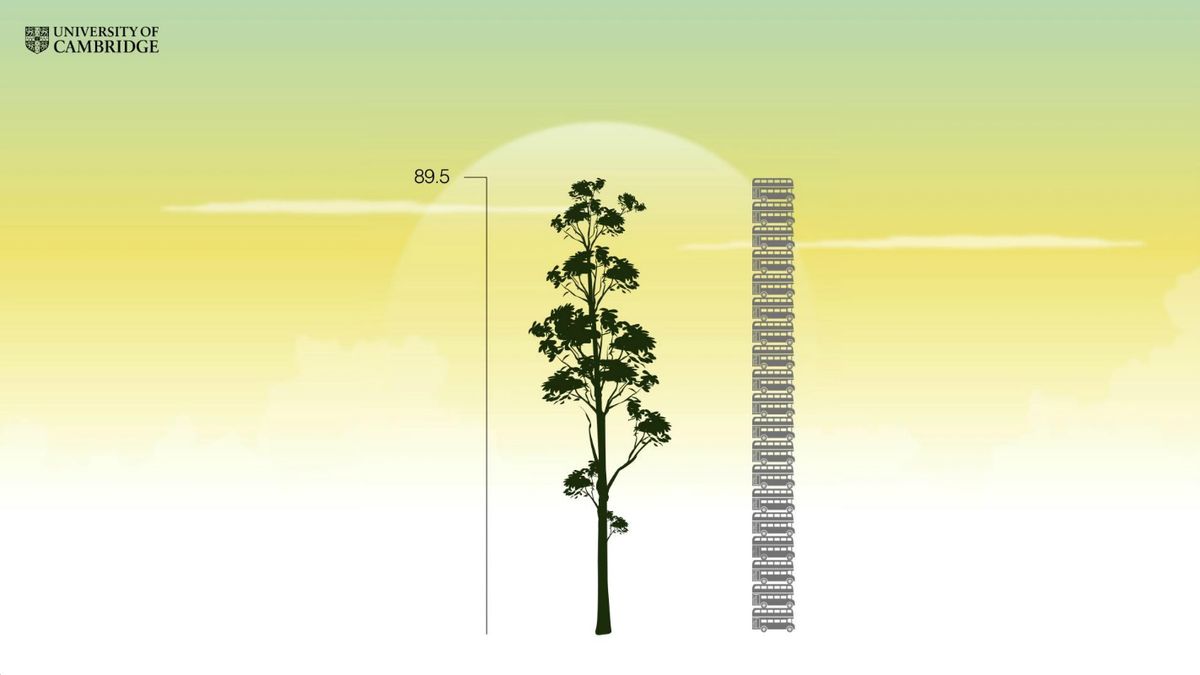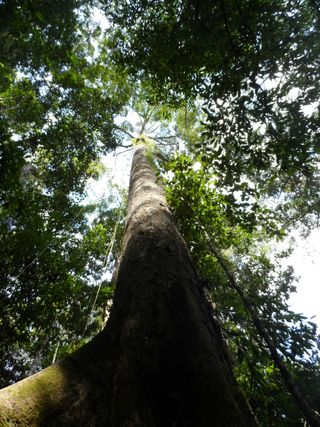'Minecraft' Tree in 'Lost World' Forest May Be Tropics' Tallest

A tree familiar to players of the computer game "Minecraft" could also be the tallest tree in the tropics, conservationists have found.
Researchers spotted the enormous yellow meranti (Shorea faguetiana), extending 293.6 feet (89.5 meters) above the forest floor, on the northern part of the island of Borneo, where they were conducting reconnaissance flights to assess local biodiversity.
Their discovery was described in an announcement published online June 8 by the University of Cambridge.
"Yellow meranti" is also one of the sapling "species" available to Minecraft users in the game's "Forestry" modification pack, and it grows into a mahogany tree. But while Minecraft users can spawn an infinite number of trees and plant them in any biome, in the real world, the yellow meranti is threatened by habitat loss and is classified as endangered by the International Union for Conservation of Nature (IUCN.) [Photos: Tallest Tree in the Tropics (Probably)]
Found in a "Lost World"
Scientists found the green giant in the Maliau Basin Conservation Area in the Malaysian state of Sabah. It grows in one of the country's last remaining untouched wilderness areas, a forested region commonly referred to as "Sabah's Lost World."
They detected the tree with lidar, a technology that combines light and radar to scan and reconstruct 3D objects. Using a device mounted on the underside of their plane, the researchers aimed laser pulses toward the ground at a rate of 200,000 pulses per second. The reflected pulses returned data about the objects' distances, which, in turn, allowed the scientists to visualize the forest below and to see that one tree reached much higher than the others.
The previous tallest tree in the tropics — also a yellow meranti — stands in Sabah's Tawau Hills National Park, and reaches a height of 289.7 feet (88.3 m).
Sign up for the Live Science daily newsletter now
Get the world’s most fascinating discoveries delivered straight to your inbox.

But there's really only one way to accurately measure a tree of this size — climb to the top with a tape measure.
And that's just what expert tree climber Unding Jami did, though his recording efforts were hampered by uncooperative local wildlife. After reaching the tree's uppermost branches, Jami managed to confirm its height before texting that he would be unable to take any photographs, as he was under attack by an eagle "and also lots of bees," according to a statement from the University of Cambridge.
Temperate record breakers
Though this tree might be the tallest in the tropics, its cousins — giant sequoias and redwoods that are native to temperate habitats — can grow much taller, according to lead researcher David Coomes, a forest ecologistat the University of Cambridge's Department of Plant Sciences.
Whereas 295 feet (90 meters) appears to be the maximum height that trees can achieve in the tropics, redwoods are known to grow as much as 98 feet (30 meters) higher, Coomes said in a statement. But "no one knows why," he added.
Regardless of where they grow, massive trees are important to a forest's health and ecology, and technologies like lidar can help conservationists to better monitor the overall status of forests, as well as that of individual trees, Coomes said.
Original article on Live Science.

Mindy Weisberger is an editor at Scholastic and a former Live Science channel editor and senior writer. She has reported on general science, covering climate change, paleontology, biology and space. Mindy studied film at Columbia University; prior to Live Science she produced, wrote and directed media for the American Museum of Natural History in New York City. Her videos about dinosaurs, astrophysics, biodiversity and evolution appear in museums and science centers worldwide, earning awards such as the CINE Golden Eagle and the Communicator Award of Excellence. Her writing has also appeared in Scientific American, The Washington Post and How It Works Magazine. Her book "Rise of the Zombie Bugs: The Surprising Science of Parasitic Mind Control" will be published in spring 2025 by Johns Hopkins University Press.












